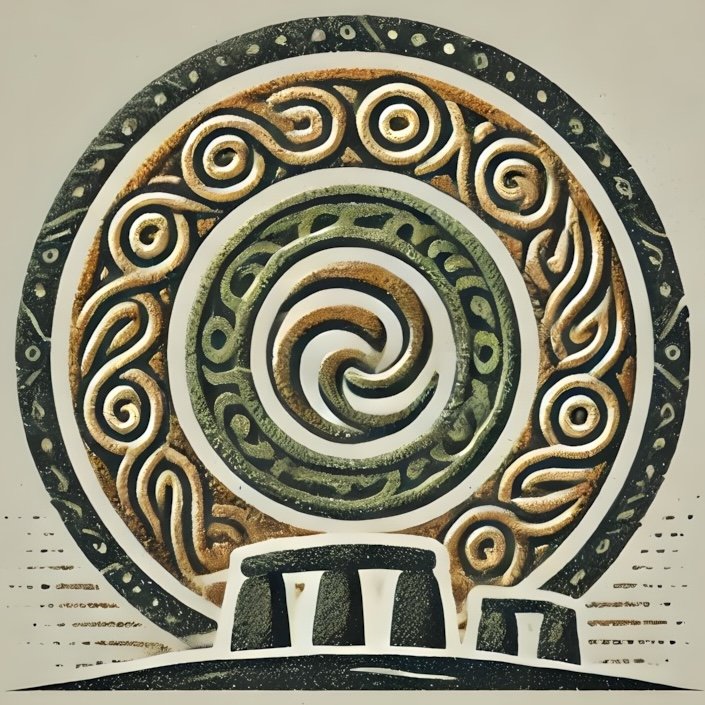First Raids and Lasting Settlements
Introduction to Viking Raids in Ireland
The Viking Age, spanning from the late 8th century to the early 11th century, marked a transformative period in Irish history. The arrival of Norse seafarers brought not only raids and plunder but also a complex tapestry of cultural exchange that would shape the Irish landscape for centuries to come. The initial Viking incursions were characterized by swift and brutal raids on monasteries and settlements, targeting the wealth accumulated by the Irish Christian communities. However, these early encounters soon evolved into more permanent settlements, laying the groundwork for a new era of urban development and cultural intermingling.
Chronology of Initial Raids
The first recorded Viking raid in Ireland occurred in 795 AD, targeting the monastery of Lambay Island. This marked the beginning of a series of assaults that would continue for decades. Notable raids followed in the years 798 and 799, with the sacking of the monastery at Iona and the subsequent attacks on coastal settlements. By the early 9th century, Viking activity had intensified, with the establishment of seasonal bases along the Irish coastline. The raids were not merely random acts of violence; they were strategic operations aimed at exploiting the wealth of the Irish ecclesiastical centers.
Motivations Behind the Raids
The motivations for Viking raids were multifaceted. Primarily, the Norsemen sought wealth and resources, drawn by the riches of Irish monasteries, which had amassed considerable treasures through donations and trade. Additionally, the Vikings were driven by a desire for land and new opportunities. As their own homelands became increasingly crowded, the allure of fertile Irish soil and the potential for trade routes offered a compelling incentive for settlement. The combination of economic ambition and the spirit of adventure fueled the Viking expeditions that would leave an indelible mark on Ireland.
Key Locations of Early Raids
Several key locations in Ireland became focal points for Viking raids. The coastal regions of Dublin, Waterford, and Wexford were particularly vulnerable due to their wealth and accessibility. Dublin, in particular, emerged as a critical site, with its strategic position on the River Liffey facilitating trade and communication. The Vikings established a fortified settlement known as a “longphort” in Dublin, which would serve as a base for further incursions and trade. Other significant sites included the monastic centers of Glendalough and Kildare, which were frequently targeted due to their wealth and religious significance.
Viking Settlement Patterns
As the initial raids transitioned into more permanent settlements, the Vikings began to establish a network of towns across Ireland. The most notable of these was Dublin, which evolved from a simple trading post into a bustling urban center. The Norse settlers introduced new architectural styles, urban planning concepts, and trade practices that would influence the development of Irish towns. Other important Viking settlements included Waterford, Limerick, and Wexford, each contributing to the burgeoning trade networks that connected Ireland to the wider Viking world.
Cultural Assimilation and Influence
The Viking presence in Ireland was not solely one of conflict; it also facilitated significant cultural exchange. The Norse settlers intermarried with the local Irish population, leading to a blending of traditions, languages, and customs. This cultural assimilation is evident in various aspects of Irish life, from art and craftsmanship to language and folklore. The Vikings introduced new technologies, such as advanced shipbuilding techniques and metalworking skills, which were adopted and adapted by the Irish. The Norse influence can still be seen today in place names, with many towns retaining their Viking-derived names, such as Dublin (from “Dubh Linn,” meaning “black pool”) and Wexford (from “Loch Garman”).
Viking Towns and Urban Development
The establishment of Viking towns marked a significant shift in the urban landscape of Ireland. The Norse settlers implemented a new model of urbanization characterized by organized streets, marketplaces, and defensive structures. Dublin, as the most prominent Viking town, became a hub of commerce and trade, attracting merchants from across Europe. The town was fortified with walls and defenses to protect against rival factions, both Viking and Irish. The layout of these towns often reflected Norse principles of urban design, with a focus on accessibility and trade efficiency, setting the stage for future urban development in Ireland.
Resistance and Conflict
Despite the initial successes of the Viking raids and settlements, resistance from the Irish population was inevitable. Local chieftains and clans frequently banded together to repel Viking incursions, leading to a series of conflicts and skirmishes. Notable figures, such as Brian Boru, emerged as leaders in the fight against the Norse invaders. The Battle of Clontarf in 1014 marked a significant turning point, where Brian Boru’s forces clashed with a coalition of Vikings and their Irish allies. Although the battle resulted in a costly victory for the Irish, it signaled the beginning of the decline of Viking power in Ireland.
Legacy of Viking Settlements
The legacy of Viking settlements in Ireland is profound and enduring. The Norse influence can be seen in the linguistic, cultural, and architectural heritage of the country. Many Irish towns today still reflect the layout and characteristics established during the Viking Age. The introduction of trade routes and marketplaces laid the foundation for Ireland’s economic development in the centuries that followed. Furthermore, the blending of Norse and Irish cultures contributed to a rich tapestry of folklore, art, and tradition that continues to resonate in modern Irish identity.
Visiting Key Sites
For those wishing to explore the Viking legacy in Ireland, several key sites offer a glimpse into this fascinating chapter of history.
1. Dublin: The heart of Viking settlement, Dublin boasts the Viking Museum and the reconstructed Viking longphort at Wood Quay. Visitors can explore the remnants of the city’s medieval past, including Dublin Castle and Christ Church Cathedral.
2. Waterford: Known as the oldest city in Ireland, Waterford features the Viking Triangle, where visitors can find the Viking Museum and the remains of the city’s medieval walls.
3. Limerick: The city of Limerick showcases its Viking heritage through the King John’s Castle, which offers insights into the Norse influence on the region.
4. Wexford: The town of Wexford, with its Viking origins, invites exploration of its historical sites, including the Wexford Heritage Park, which highlights the area’s rich past.
5. Glendalough: This monastic site, frequently raided by Vikings, offers stunning landscapes and a glimpse into the early Christian period, juxtaposed with the Viking incursions.
These sites not only provide a connection to Ireland’s Viking past but also allow visitors to appreciate the enduring impact of this era on the Irish landscape and culture. Each location tells a story of conflict, resilience, and cultural exchange, inviting exploration and reflection on the complex history that shaped Ireland.
meta –

